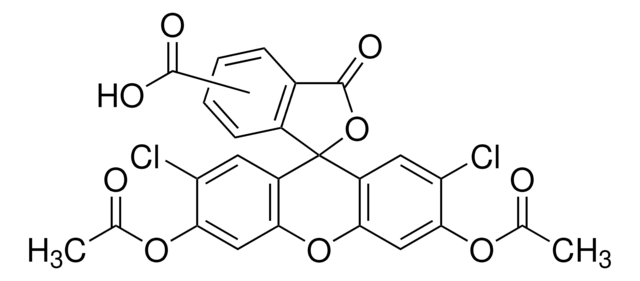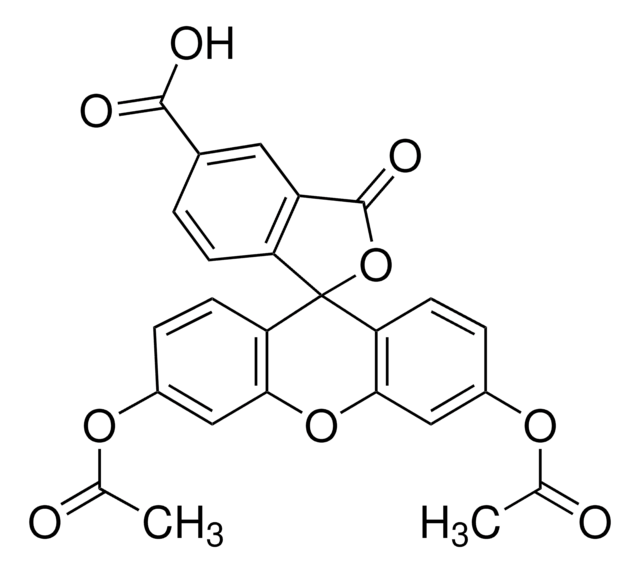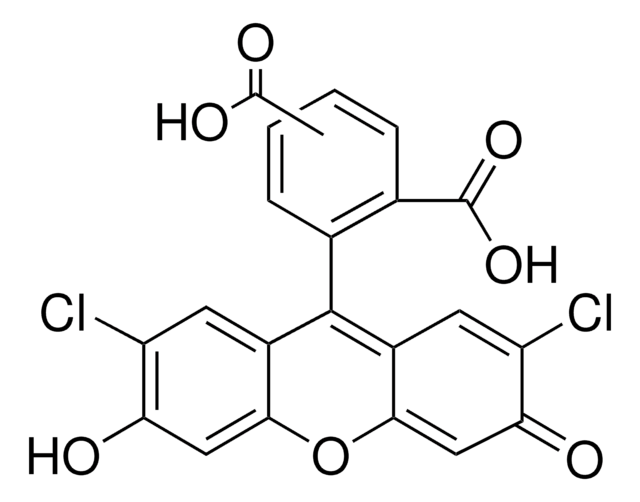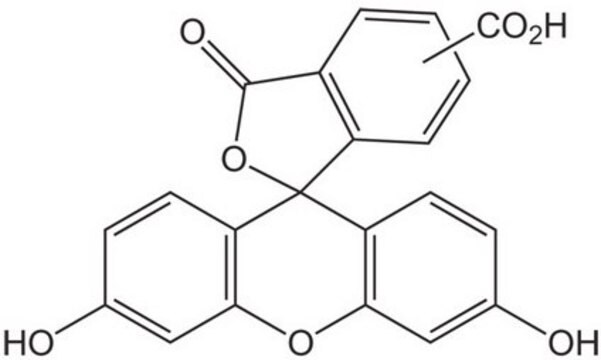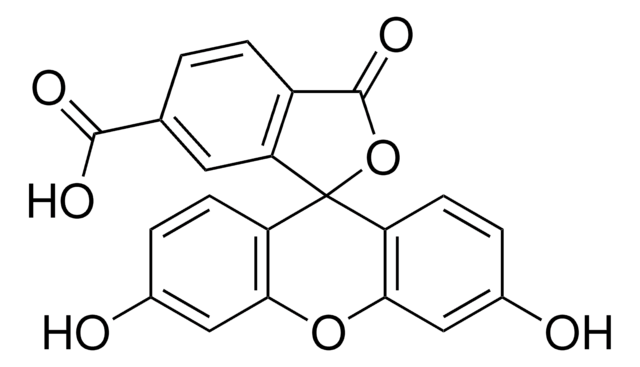추천 제품
제품 라인
BioReagent
Quality Level
분석
≥90.0% (HPLC)
양식
powder
solubility
DMSO: soluble
형광
λex 492 nm; λem 517 nm in 0.1 M Tris pH 8.0 (esterase)
적합성
suitable for fluorescence
저장 온도
2-8°C
SMILES string
CC(=O)Oc1ccc2c(Oc3cc(OC(C)=O)ccc3C24OC(=O)c5ccc(cc45)C(O)=O)c1.CC(=O)Oc6ccc7c(Oc8cc(OC(C)=O)ccc8C79OC(=O)c%10cccc(C(O)=O)c9%10)c6
InChI
1S/2C25H16O9/c1-12(26)31-15-4-7-18-21(10-15)33-22-11-16(32-13(2)27)5-8-19(22)25(18)20-9-14(23(28)29)3-6-17(20)24(30)34-25;1-12(26)31-14-6-8-18-20(10-14)33-21-11-15(32-13(2)27)7-9-19(21)25(18)22-16(23(28)29)4-3-5-17(22)24(30)34-25/h2*3-11H,1-2H3,(H,28,29)
InChI key
SWRGCNMDGRMQGB-UHFFFAOYSA-N
일반 설명
애플리케이션
5(6)- Carboxyfluorescein diacetate (CFDA) is a viability probe that assesses enzymatic activity, which is necessary to activate its fluorescence, and cell-membrane integrity, which is necessary for the retention of their fluorescent product within the cell.
Storage Class Code
11 - Combustible Solids
WGK
WGK 3
Flash Point (°F)
Not applicable
Flash Point (°C)
Not applicable
개인 보호 장비
Eyeshields, Gloves, type N95 (US)
이미 열람한 고객
문서
Nitric oxide (NO) as a signal transporter in neurons, endothelial cells and in the immune system.
자사의 과학자팀은 생명 과학, 재료 과학, 화학 합성, 크로마토그래피, 분석 및 기타 많은 영역을 포함한 모든 과학 분야에 경험이 있습니다..
고객지원팀으로 연락바랍니다.